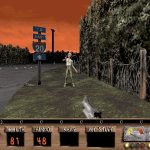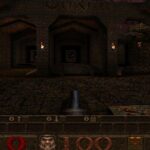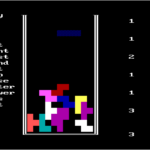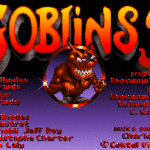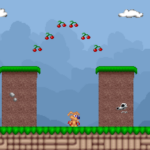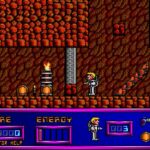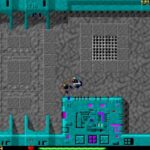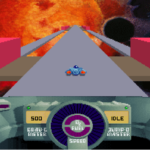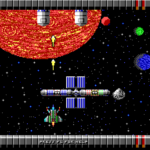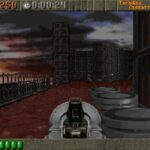Game controls:
Use arrow keys to move , CTRL to Shot
About:
Nitemare 3D (N3D) is a first-person shooter video game with a horror theme, released by Gray Design Associates in 1994 for DOS and Windows 3.x platforms. It consisted of three episodes with ten levels in each episode, with the first episode being released as shareware. The full release came on two 3½” floppy disks and was accompanied by a guide to the game’s thirty levels. According to David P. Gray himself, the game is the first pixelated Windows game to use the WinG interface.[1]
The graphics were similar to those used in Wolfenstein 3D or Ken’s Labyrinth, with perpendicular walls and no textures on the floors or ceilings. The music in Nitemare 3D was composed by David B. Schultz (also composed for Quiver).
Nitemare 3D follows the story of Hugo, from the Hugo trilogy, a series of graphic adventure PC games consisting of Hugo’s House of Horrors, Hugo II, Whodunit?, and Hugo III, Jungle of Doom!. Penelope, Hugo’s girlfriend, has been kidnapped by the evil Dr. Hammerstein for use in heinous experiments. Hugo must battle through Hammerstein’s bizarre mansion, caverns complete with prisons and laboratories, and finally through a twisted alternate dimension of demons and aliens in an attempt to save her.
Rather than the fast-paced action of Wolfenstein 3D, Nitemare 3D has a slightly slower, more puzzle-oriented style of gameplay. The four weapons (plasma gun, magic wand, pistol, and auto-repeat plasma gun) have different usages—for example, magic blasts are especially useful against magical creatures such as witches, whereas robots are practically immune to them. Meanwhile, vampires take heavy damage from silver bullets, while shrugging off the effects of the plasma gun. Each level in the game has numerous secret panels, some of which were purely for bonuses, but others are essential to completing the level. To make this task easier, the player can collect magic eyes, which enable the player to activate a mini-map in the game’s HUD and give hints as to the locations of panels, and crystal balls for displaying the location of enemies.
In a similar vein to id Software’s Wolfenstein 3D and Doom, the player character’s face is shown on the status bar and acts as a visual reflection of the player’s health, although instead of becoming bloodier, the skin wears away, leaving a skull when near death, and a darkened skull when dead – alike to the early Catacomb 3-D game.

